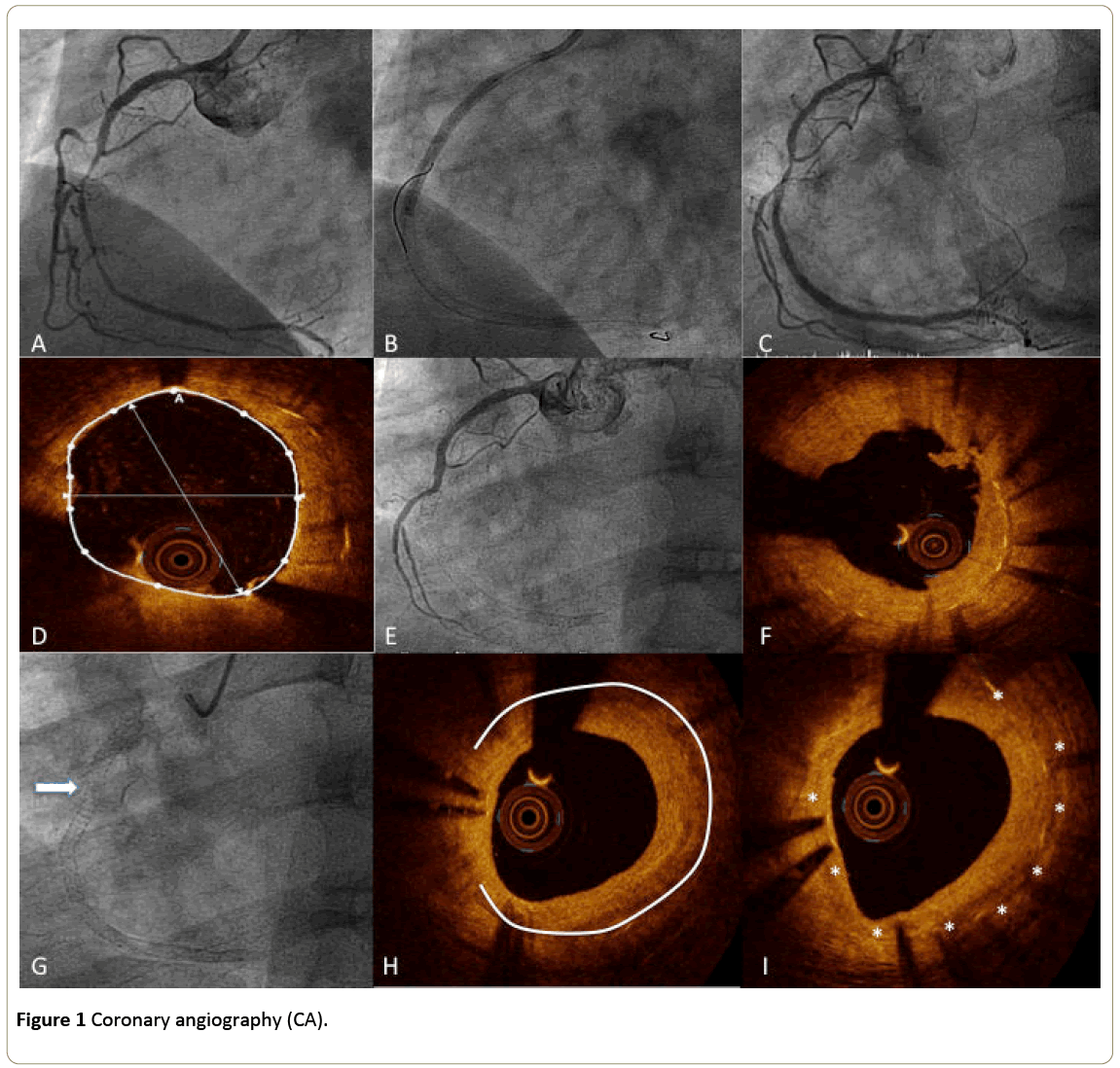Case Report - (2016) Volume 2, Issue 2
Very Late Stent Thrombosis Associated With Stent Fracture and Antiplatelet Treatment Discontinuation
Alfonso Jurado-Román*, Ignacio Sánchez-Pérez, María T López-Lluva, Jesús Piqueras-Flores and
Fernando Lozano-Ruíz-Poveda
Interventional Cardiology Department, University General Hospital of Ciudad Real, Ciudad Real, Spain
- *Corresponding Author:
- Alfonso Jurado-Román
University General Hospital of Ciudad Real
Avenida Obispo Rafael Torija 13005
Ciudad Real, Spain
Tel: 0034629871863
E-mail: alfonsojuradoroman@gmail.com
Received date: July 04, 2016; Accepted date: July 18, 2016; Published date: July 20, 2016
Citation: Jurado-Román A, Sánchez-Pérez I, López-Lluva MT, et al. Very Late Stent Thrombosis Associated With Stent Fracture and Antiplatelet Treatment Discontinuation. Interv Cardiol. 2016, 2:2.
Abstract
Stent fractures are a rare finding that have been associated with stent thrombosis and restenosis. The majority of descriptions affect to first generation drug eluting stents. Angiographic diagnosis is difficult and should be suspected in patients with risk factors when an angiographic separation of struts is visualized. Intracoronary imaging techniques are very useful and can confirm the diagnosis. We present a case of very late zotarolimus eluting stent thrombosis probably favoured by stent fracture and discontinuation of prasugrel.
Keywords
Stent fractures; Angiographic diagnosis;
Zotarolimus; Thrombosis; Intracoronary imaging
techniques
Introduction
74 years-old patient with diabetes suffered an acute
coronary syndrome (ACS) on 2011. Coronary angiography (CA)
showed a diffusely diseased right coronary artery (RCA)
(Figure 1) (Figure 1A) that was treated with four overlapped
zotarolimus eluting stents (DES) (Figure 1B) with good final result (video 1). On July 2014, he presented a severe in-stent
restenosis at mid RCA (Figure 1C) that was treated successfully
with a drug-eluting balloon (Figure 1D). Aspirin and prasugrel
were prescribed for one year. On April 2015, he suffered a new
ACS after stopping prasugrel 48 hours before. CA showed a
thrombotic in-stent occlusion at mid RCA (Figure 1E and 1F)
and a discontinuation of the stent struts at proximal segment
(Figure 1G; arrow). As no GAP without stent was left at this
point during previous interventions, stent fracture was
suspected. Optical coherence tomography confirmed the
diagnosis showing absence of struts in a great arch of the
circumference at this point (Figure 1H) that were visible in
almost all the circumference at contiguous frames (Figure 1I;
asterisks). Another drug eluting stent (DES) was implanted at
this segment, aspirin and prasugrel were reintroduced for 1
year and the patient remains asymptomathic 15 months later.
Figure 1: Coronary angiography (CA).
Stent fractures are a rare finding, usually described in first
generation DES1, that have been associated with stent
thrombosis and restenosis. Angiographic diagnosis is difficult
and it should be suspected in patients with risk factors 1 (RCA,
long or overlapped stents, hinge movement segments and
vessel angulation and calcification) when an angiographic
separation of struts is visualized. Intracoronary imaging
techniques can confirm the diagnosis observing an absence of
struts in one or more coronary segments.
References
- Hernández FH, Román AJ, Tejada JG, Martín MV, González-Trevilla AA, et al. (2013) Intravascular Diagnosis of Stent Fractures: Beyond X-ray Imaging. Rev Esp Cardiol 66: 744-754.


